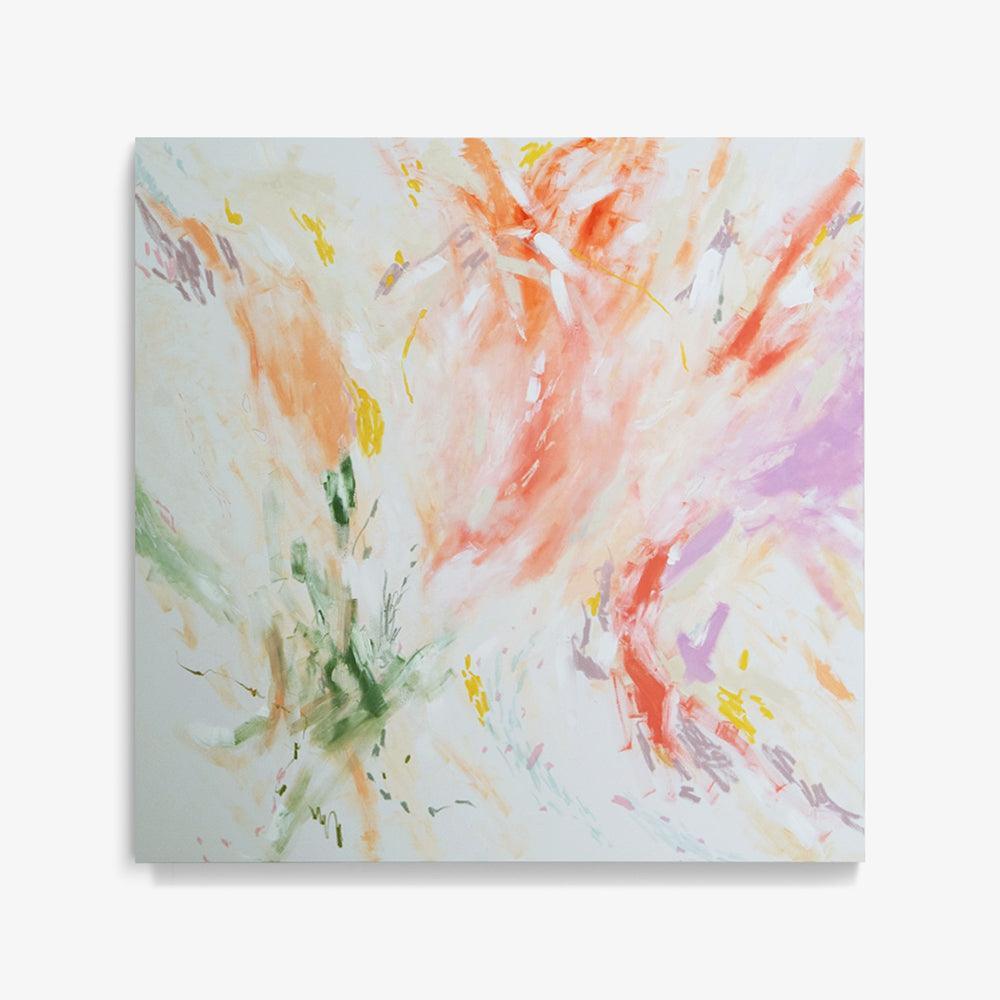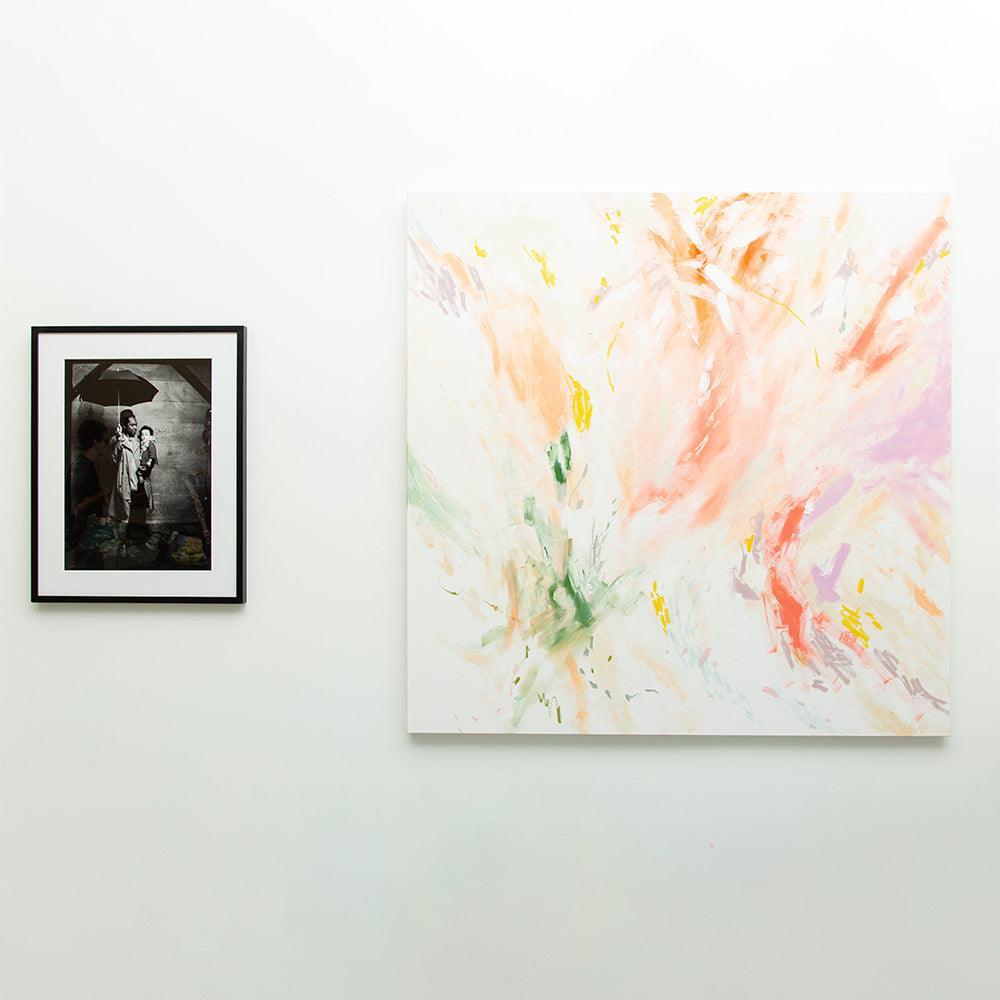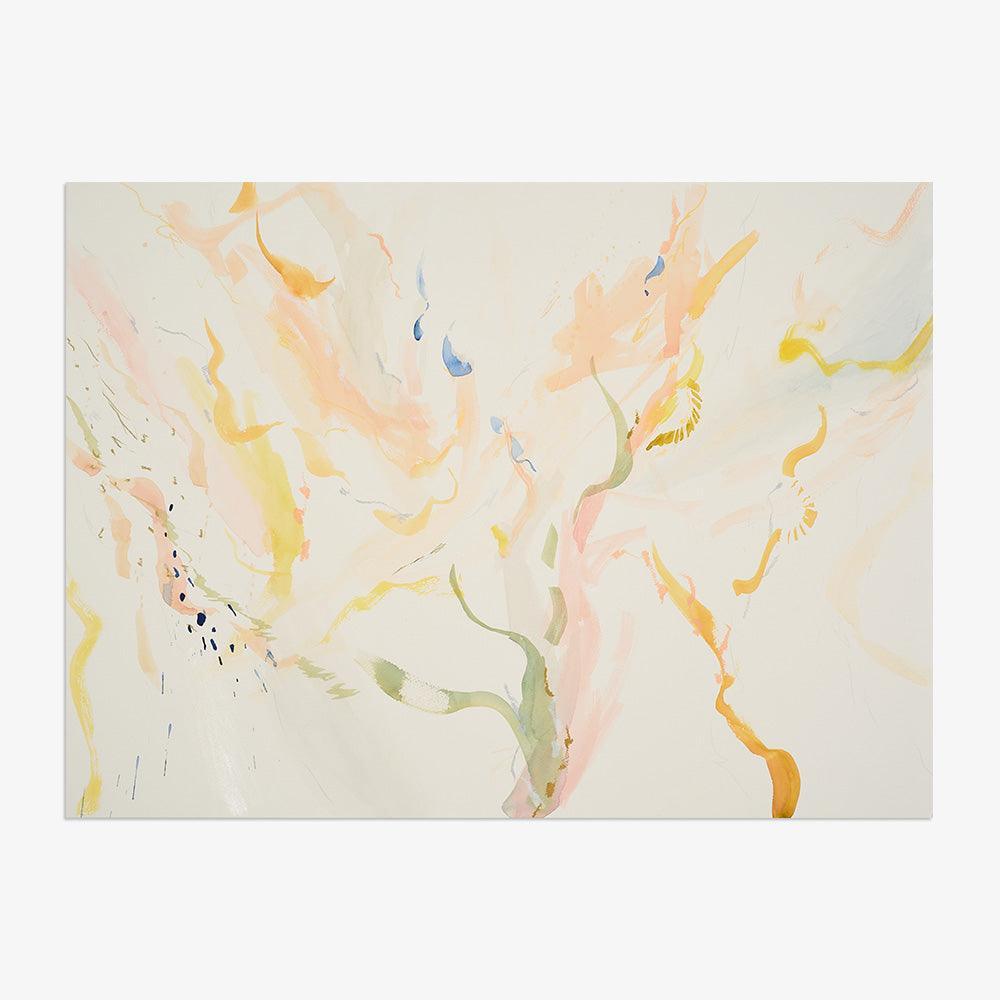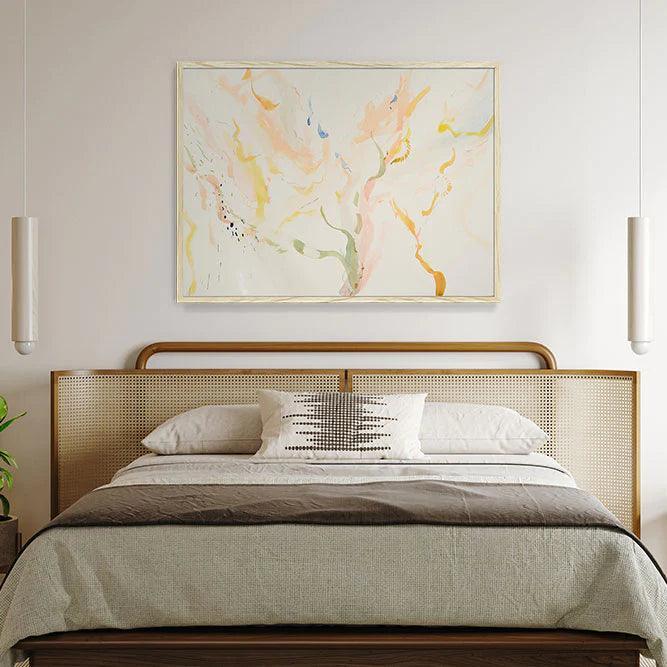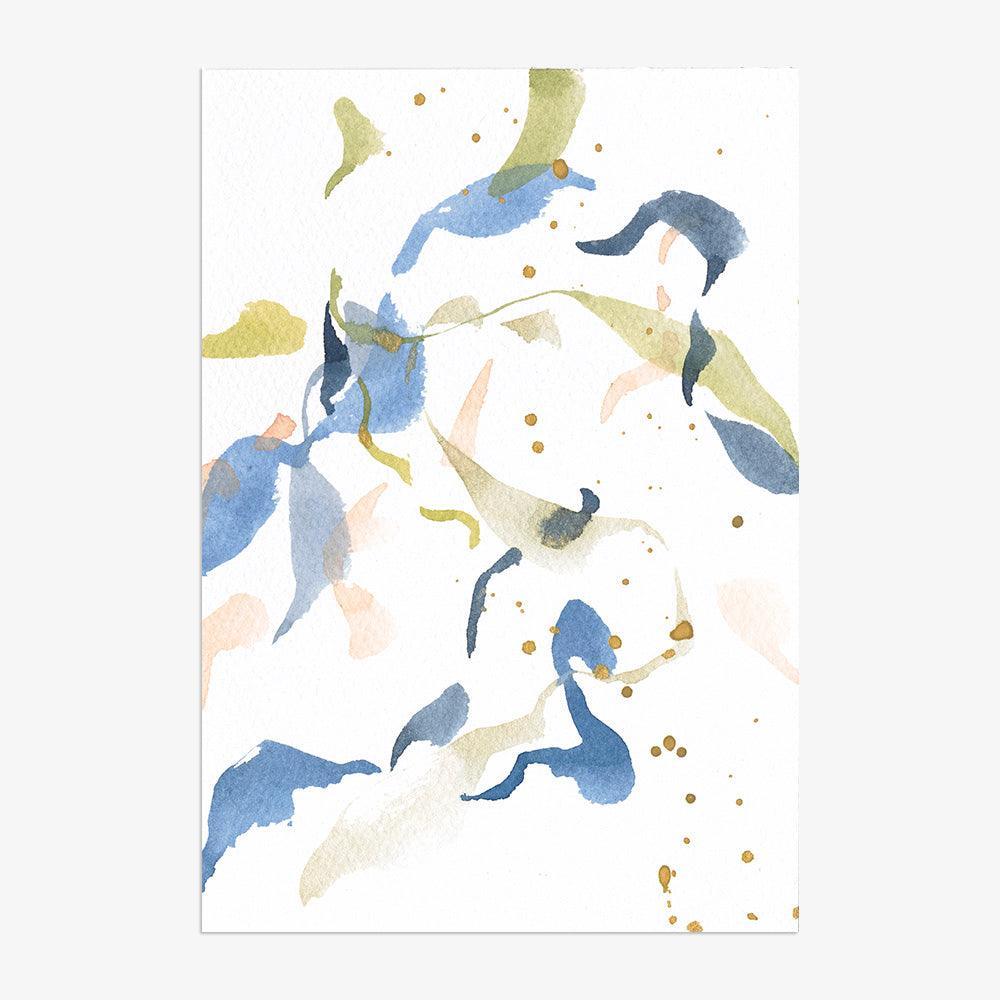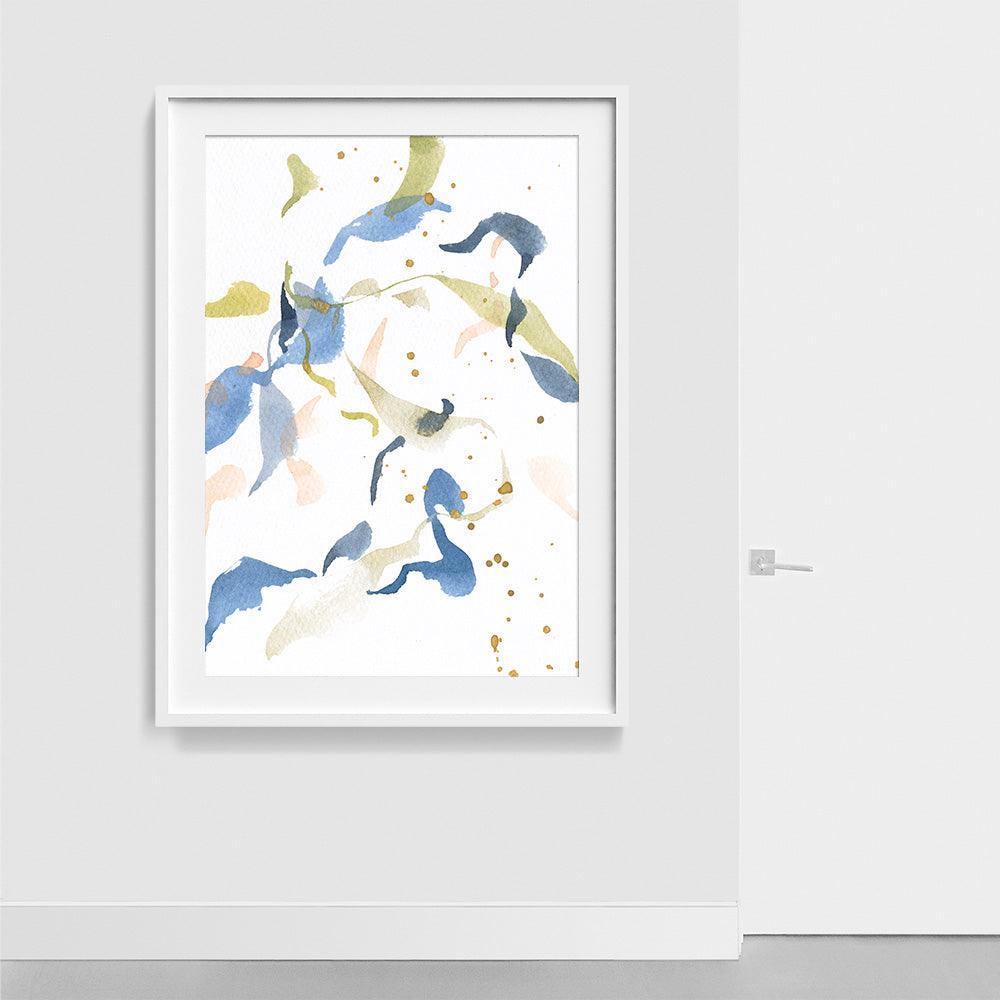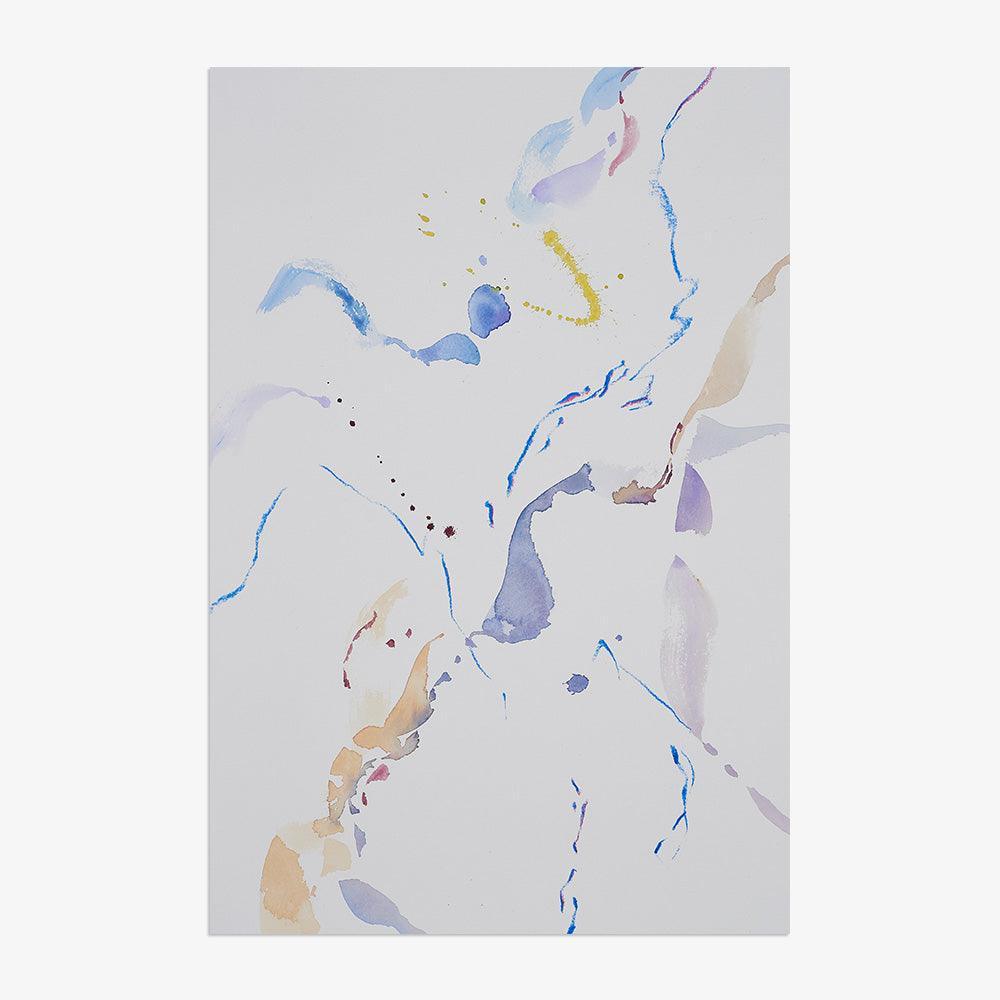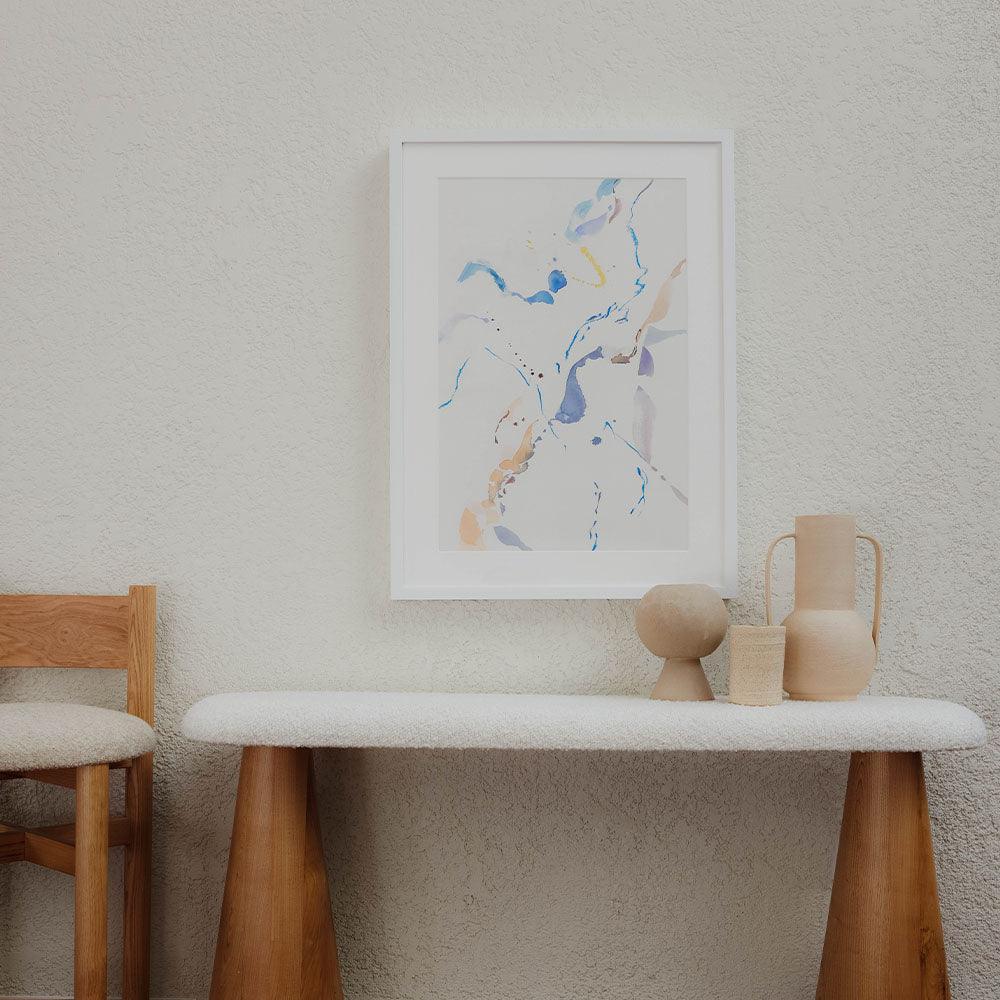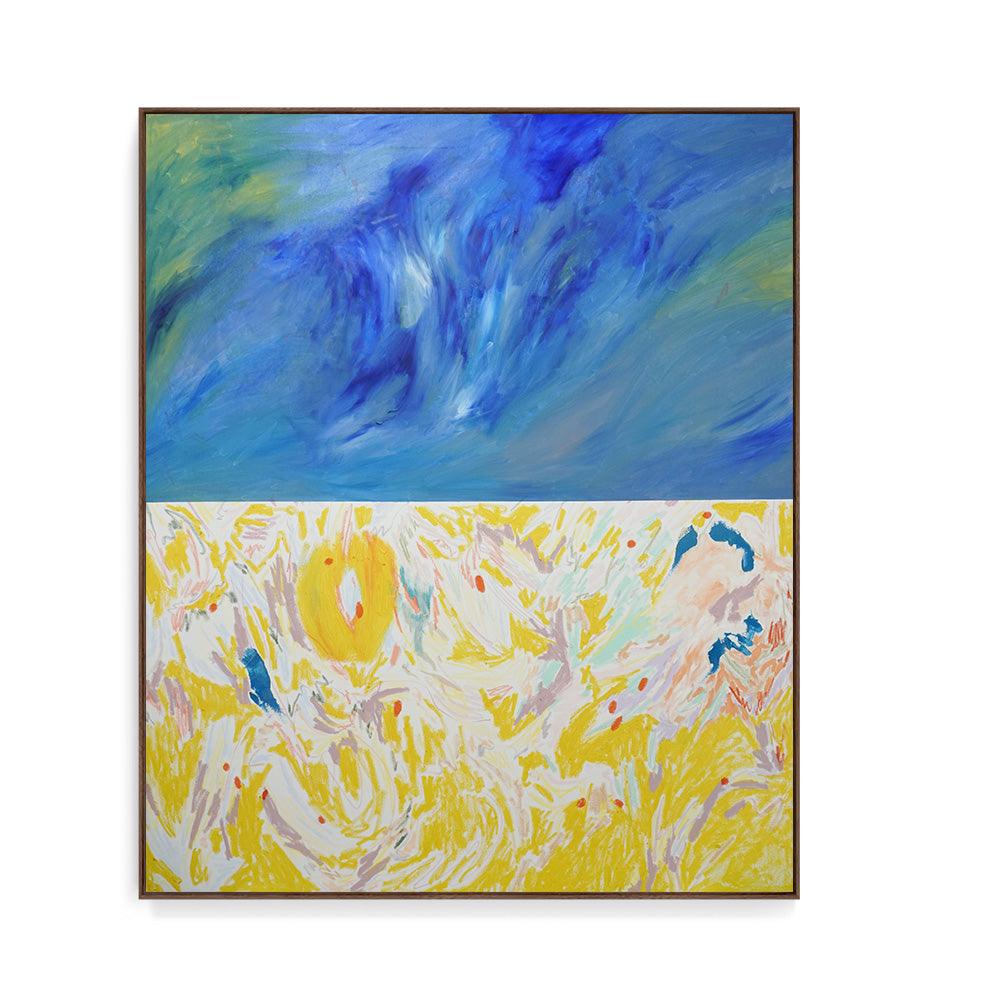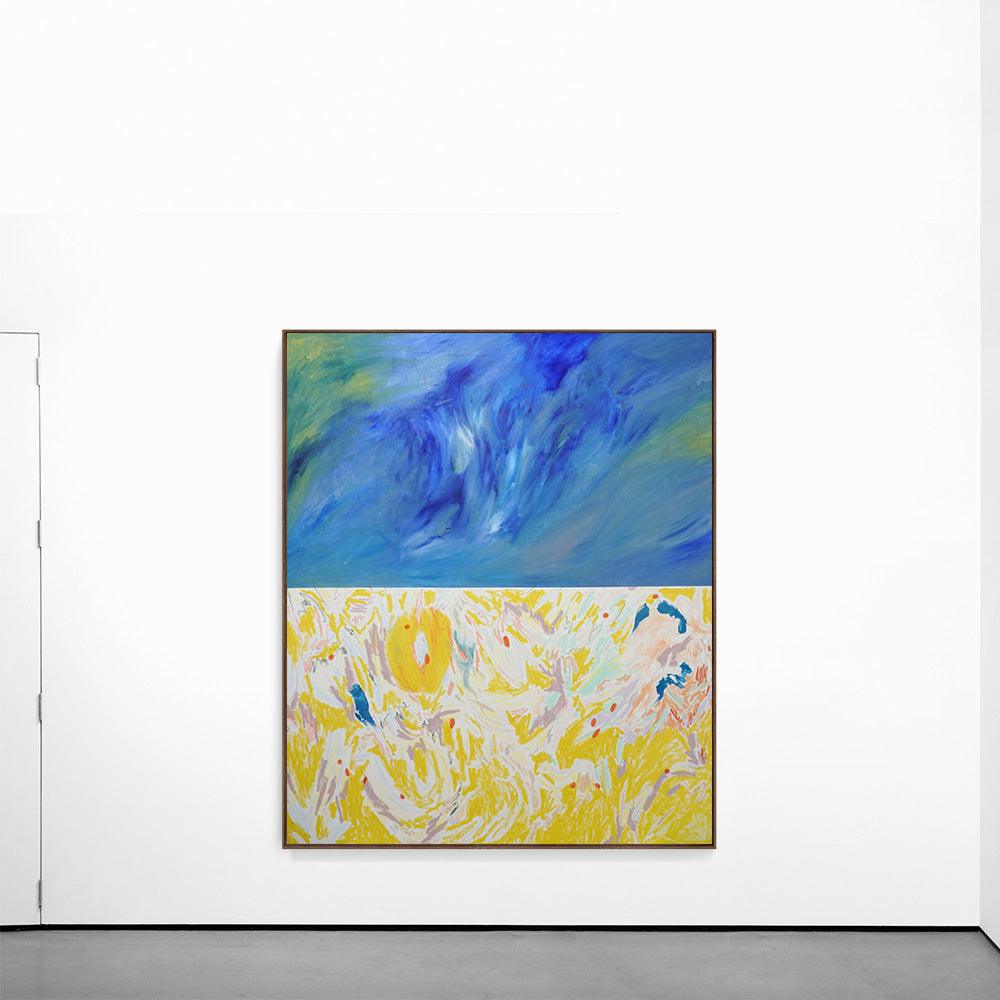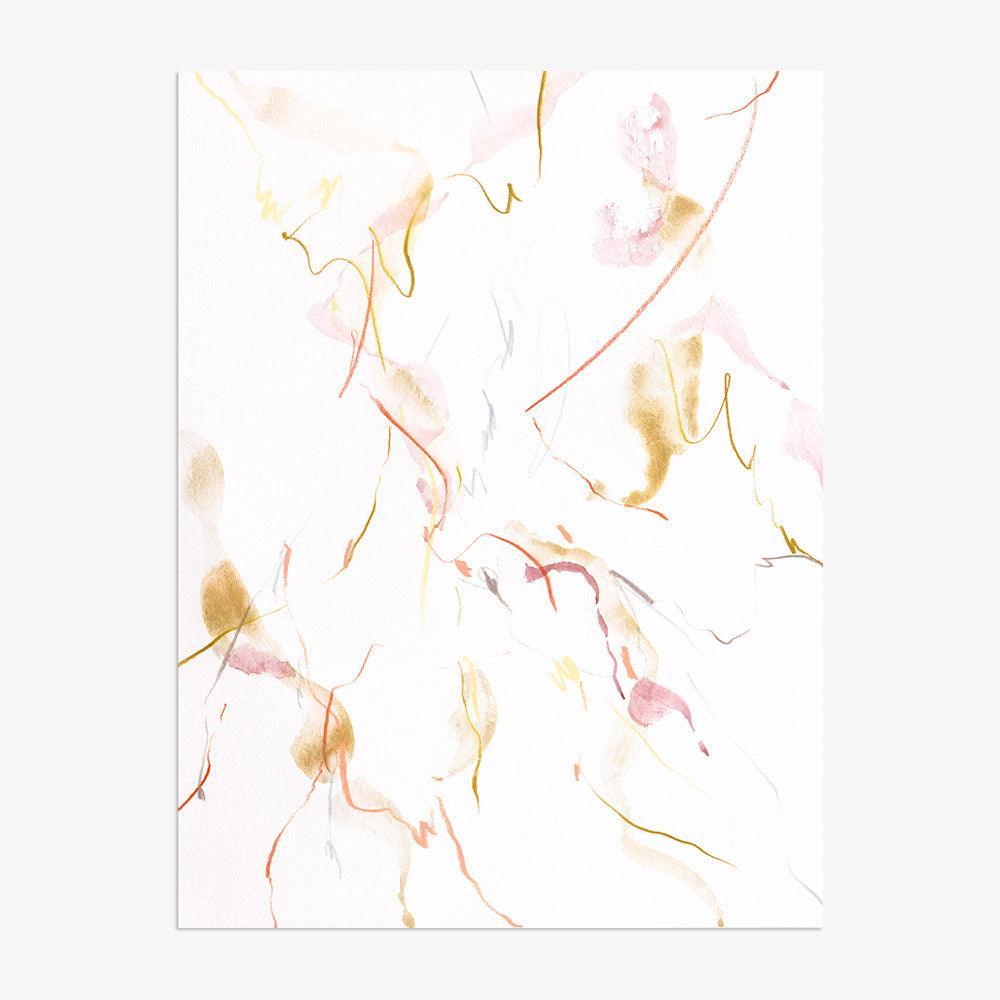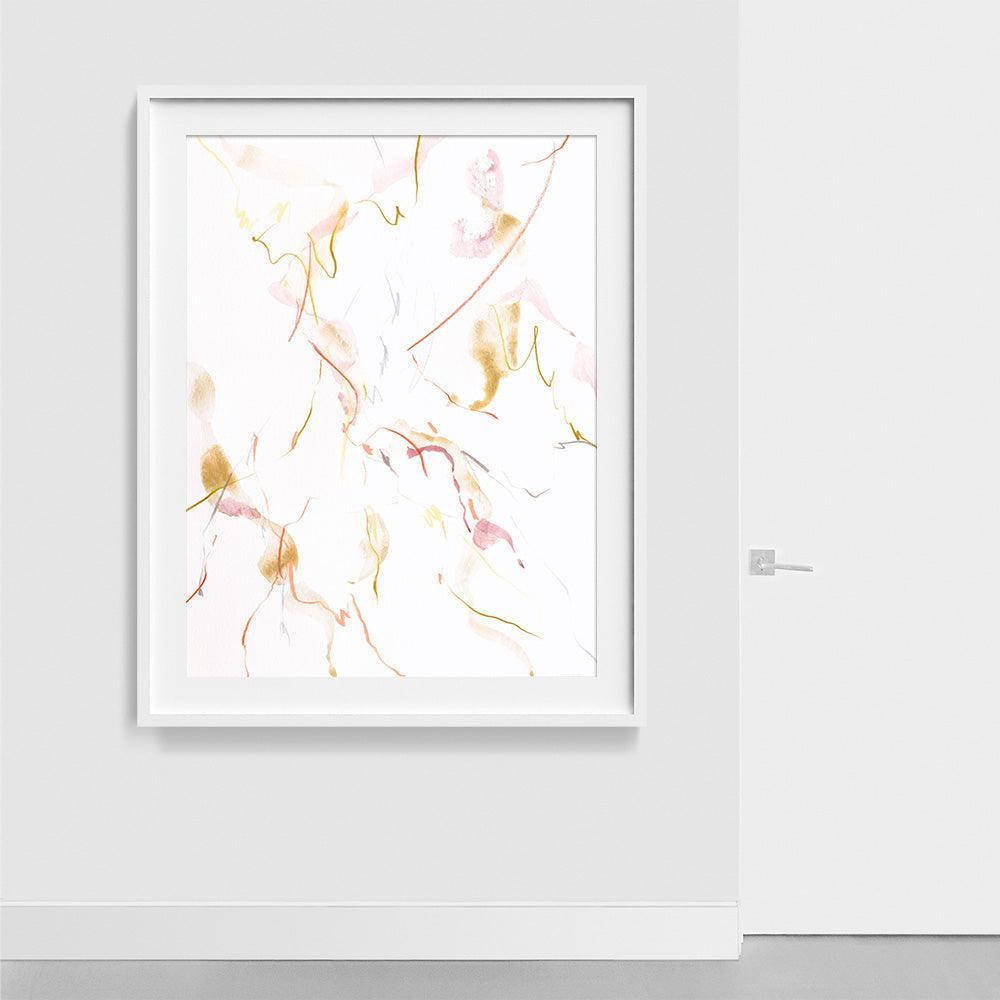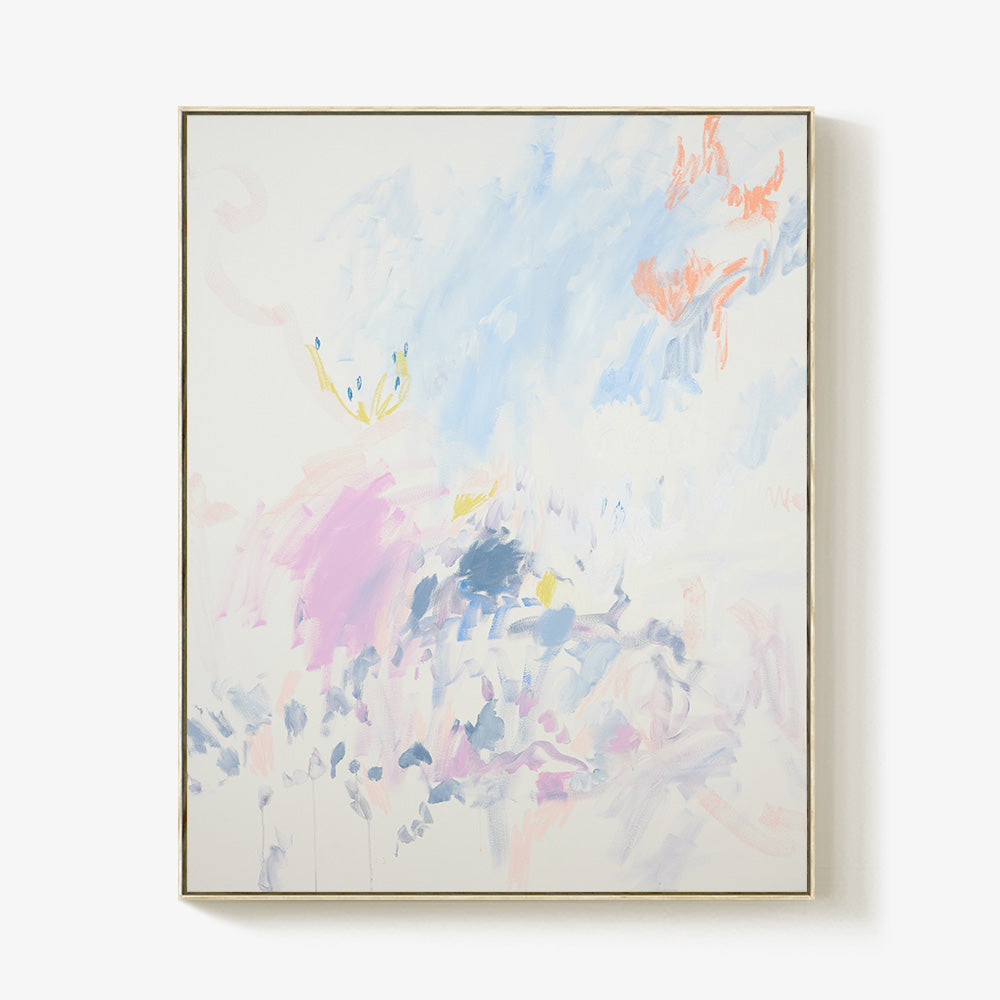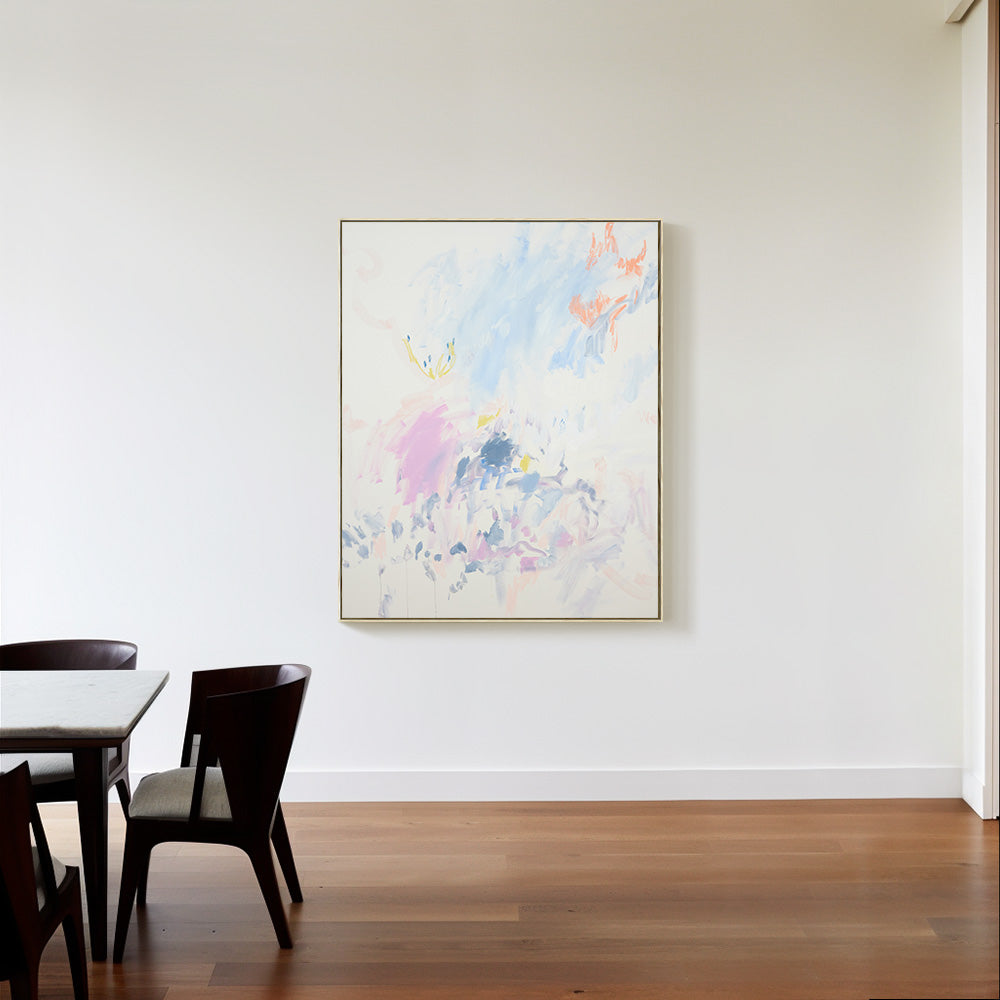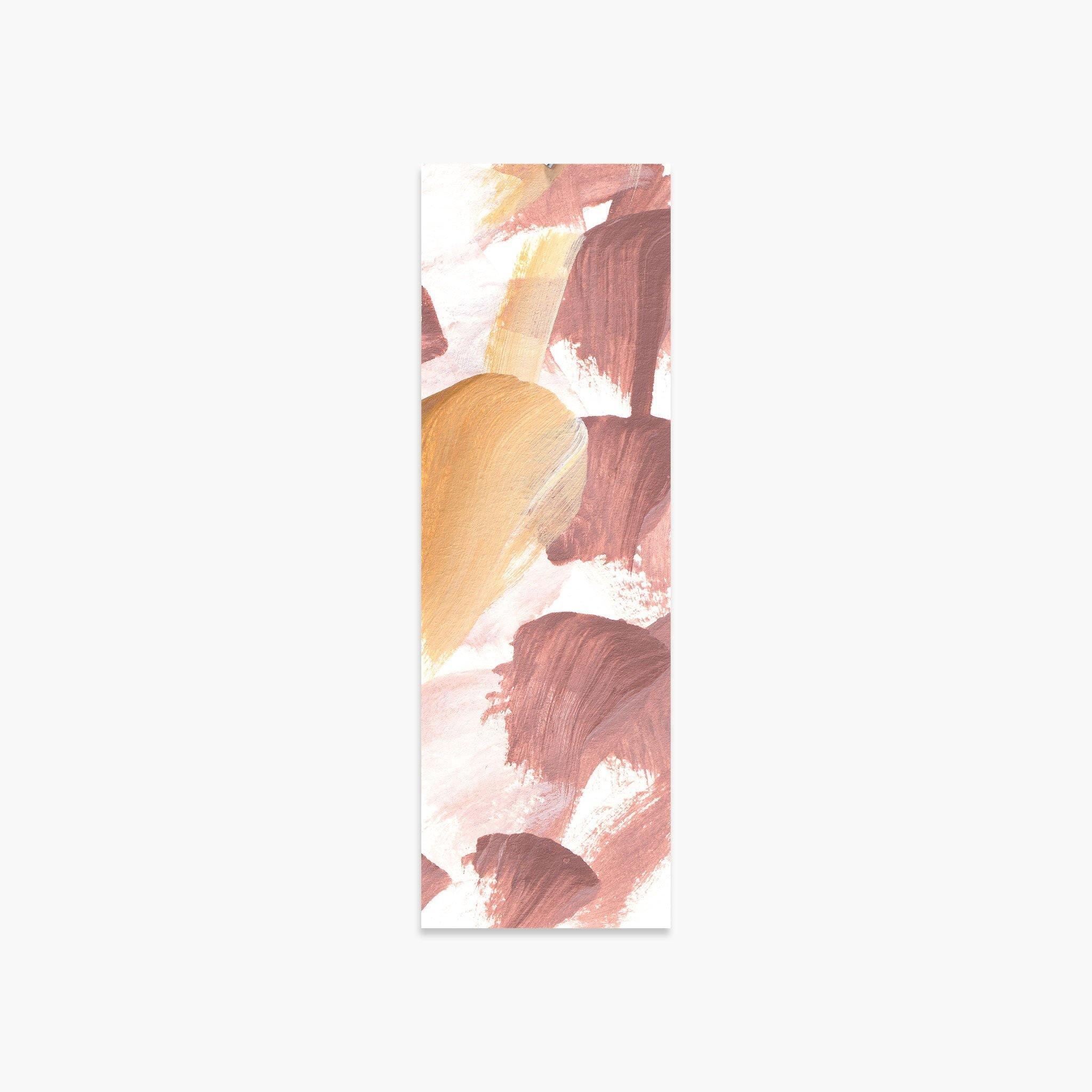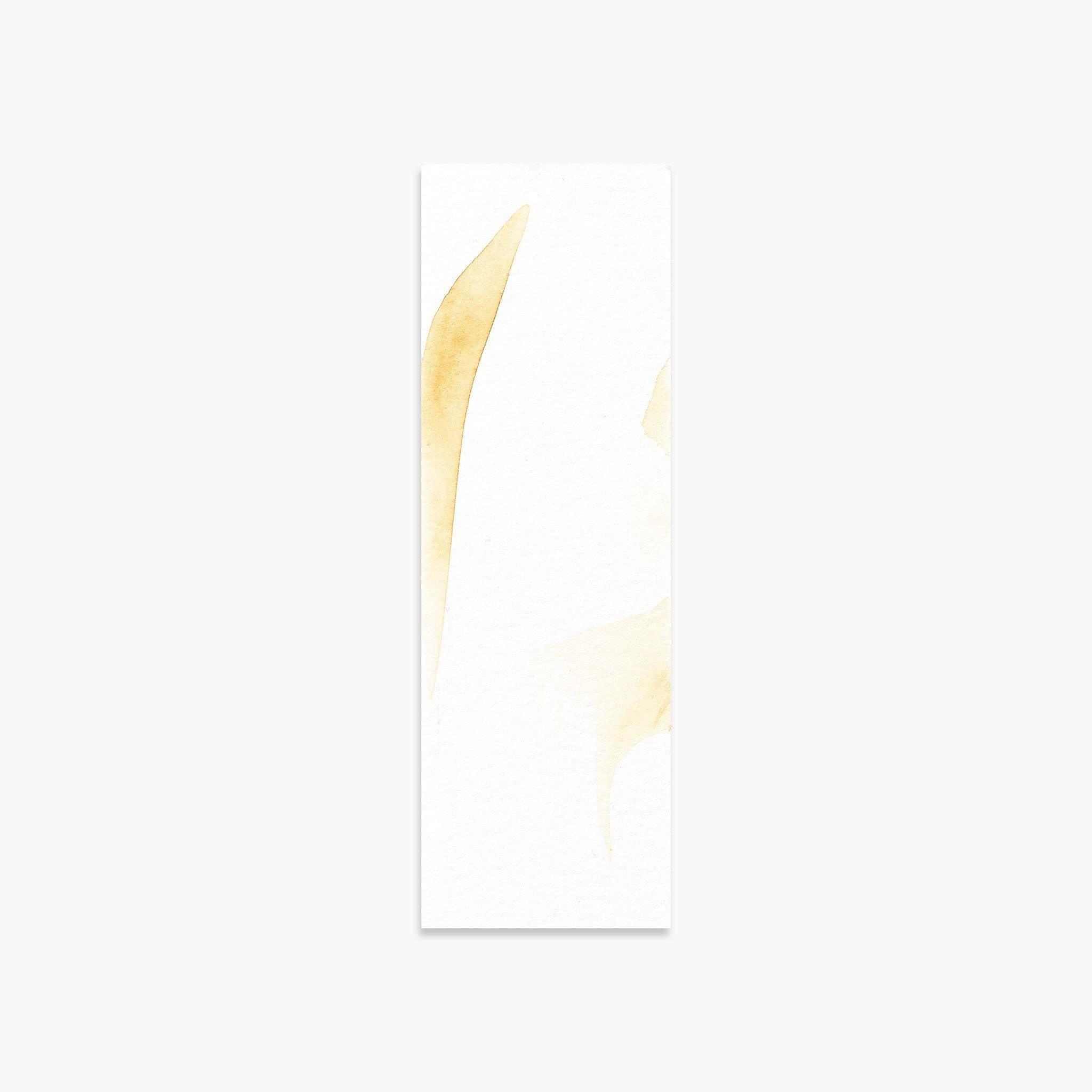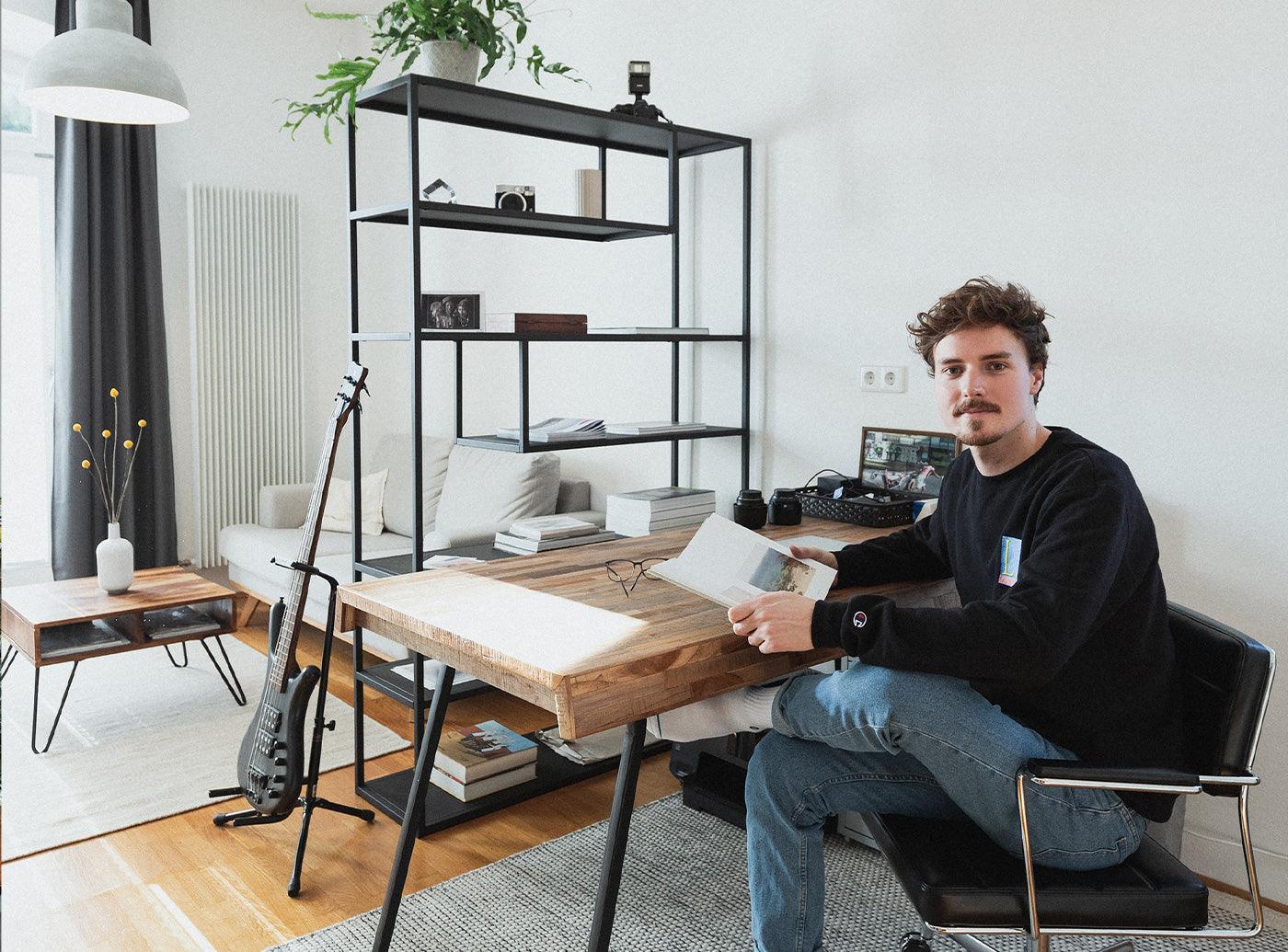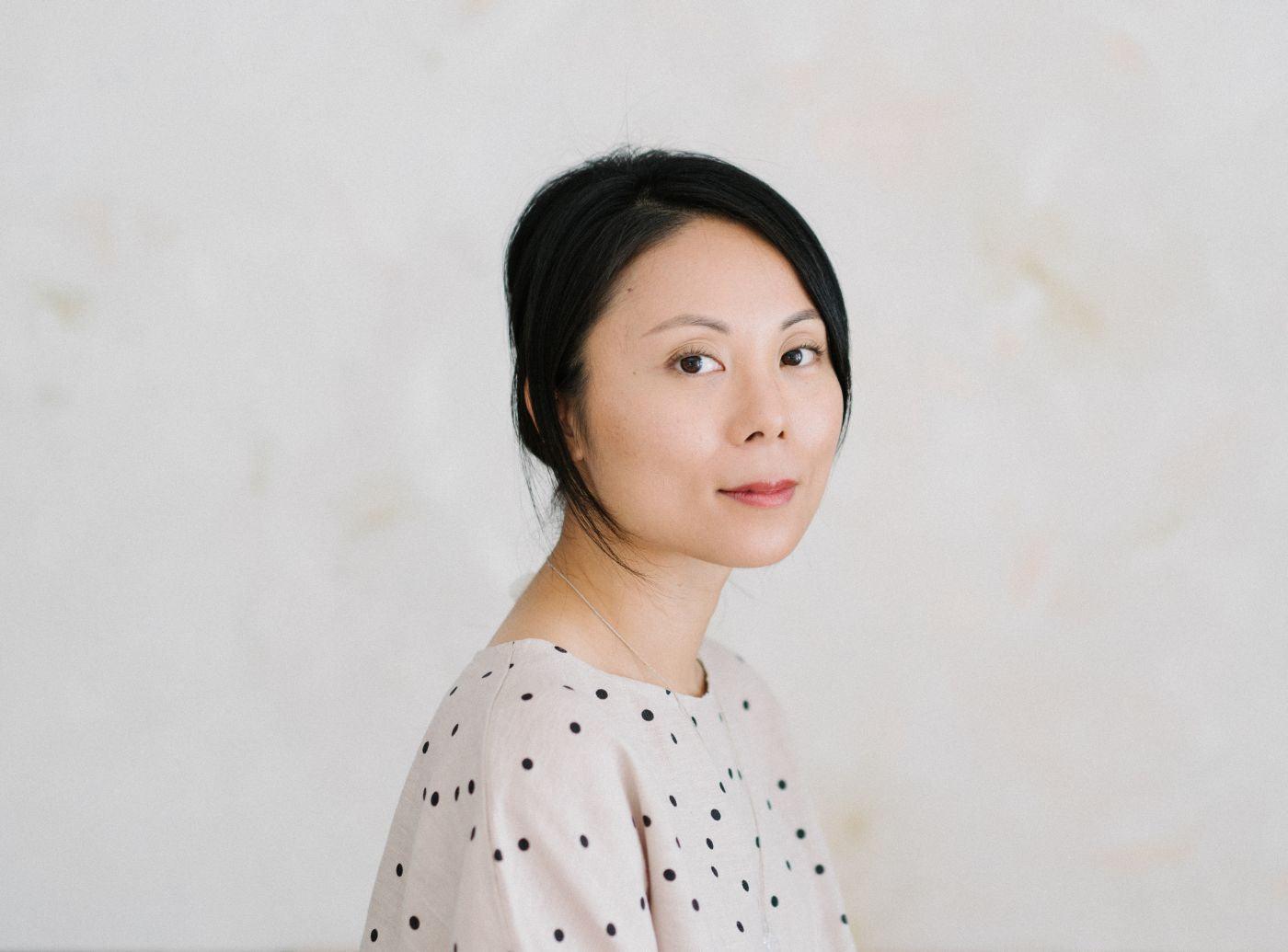
In the Studio | Satsuki Shibuya
This week we sat down with artist Satsuki Shibuya to talk about her new works launching on Tappan this week and her practice as it continues to develop. Simple in form, Satsuki's watercolors are representative of a meditative state of mind. Conscious of the movement, palette and tone in each work, Satsuki perfectly coalesces her medium and her mindset, creating paintings that exude a calmness, a state of existence that one can truly get lost in. Satsuki discussed her special gift of synesthesia with us, a heightened sense that ultimately led her to convey feeling and emotion through her watercolor paintings.
TAPPAN
We've briefly discussed your gift of synesthesia before and how it has influenced you to create. How do you define synesthesia? There is certainly a dictionary definition, but what a personal and unique experience! Tell us about what is means to you, and your early experience of realizing you possessed a special gift.
SATSUKI SHIBUYA
For myself, synesthesia comes in a variety of forms, some closer to the definition and others, not so orthodox. If more inline with mainstream understanding, I associate sounds with colors, or more specifically, certain sound waves as colors. It is a combination of the sound tone, mixed with a sensory connection to the vibration felt throughout the body which produces an association with a particular color. Ever since I was young, I would feel the world around me, noticing the simplest of details, like a leaf falling from a tree on the side of the freeway, while peering out the window sitting in traffic. I would not only see this happening, but feel the leaf, swaying side to side, floating down onto the ground. It would mesmerize me as all senses were being tantalized by this one moment. I remember one day riding in the car with a friend and pointing out a beautiful autumn colored leaf which was green not too long ago, sharing thoughts about the seasonal change, only to receive a reply of, “What the heck are you talking about? You’re so weird, Satsuki.” ’Til this day, those words ripple within, once associated with a stabbing reality of being different, is now a fond memory, coupled with a chuckle and thankful for the deep connection I experience through this “gift”.
TAPPAN
Is the affect of synesthesia a constant one? How have you managed to "live with it?"
SATSUKI SHIBUYA
It is a constant one in a sense that if I visit a densely populated area or find myself surrounded by multiple sound sources, it can get quite overwhelming quickly and therefore need to either do some preparation work prior to entering the environment or find quiet time afterwards to recharge. Sometimes, if it affects the body heavily, I will end up feeling ill for a few days. Before, it felt out of my control as I was not aware of what was happening, but finding out more about my condition and the way in which the body, mind, and spirit interact with the outside world, I am able to better harmonize with my surroundings, and through it, transmute the experiences into my work.
TAPPAN
Living with synesthesia certainly inspired a slew of creativity in you - did you begin with watercolor or were you at first finding other creative ways of discovering and communicating your gift?
SATSUKI SHIBUYA
As I was not quite aware of this “gift” until 2011, after a sudden illness, I never really took into consideration having it a part of what I do, but by the time I discovered watercolor, through receiving messages to paint, it was very much a guided decision, watercolor being the medium best suited in expressing the unseen words experienced into a tangible form of communication with others.
Satsuki Shibuya says:
“WHEN I FIRST BEGAN PAINTING, THERE WAS NEVER AN INTENTION TO CREATE IN A PARTICULAR STYLE OR GENRE, BUT I WAS INTRIGUED WHEN OTHERS, WHO GRACIOUSLY SHARED MY WORK, WOULD REFER TO IT HAVING HINTS OF JAPANESE CULTURE. BEING SECOND GENERATION JAPANESE-AMERICAN, I HAVE ALWAYS FELT NEITHER HERE NOR THERE, BUT IN THE MIDDLE, I SENSE THAT THIS IS WHAT COMES THROUGH IN MY WORK.”



TAPPAN
Have the cities you’ve lived in influenced your practice? If so, tell us a bit about that, and what elements in particular steered you in certain directions.
SATSUKI SHIBUYA
I’ve never had the opportunity (yet) to live in another city except the City of Angeles, but I have always been deeply influenced by my parent’s homeland, Japan, whether it is the philosophy of Buddhism or the architecture of Kyoto. When I first began painting, there was never an intention to create in a particular style or genre, but was intrigued when others, who graciously shared my work, would refer to it having hints of Japanese culture. Being second generation Japanese-America, I have always felt neither here nor there, but in the middle, and sense that this is what comes through in my work.
TAPPAN
What is one artist living or dead you feel a great connection to? Someone who’s work has inspired your own practice and what you’re creating these days?
SATSUKI SHIBUYA
Agnes Martin. When I first came across her work, the distinction was instantaneous. All the cells in my body danced — I knew I was in the presence of something beyond just a beautiful piece of art. After reading more about her life, her philosophy towards painting, and perspectives, it was clear why I felt a connection.
TAPPAN
What's one thing you still have from your childhood?
SATSUKI SHIBUYA
My sense of direction. I’m sure I get it from my father, but if I visit a place once, sometime twice, I will never forget how to get there again. It’s funny as I had the hardest time in school remembering historical figures, names, mathematical equations, chemistry elements, but maps and directions? I was and am the queen.


TAPPAN
When do you make your best work?
SATSUKI SHIBUYA
When I am well rested, feel balanced and grounded through yoga, meditation, reading, writing, and eat a whole foods diet. All things that I am sure make any human body feel good, but for myself, with painting being such a physical practice, the mind, body, spirit balance has to be in tune with the Earth and Universe to create the best work possible.
TAPPAN
Regarding your method of making, is it a case of the material or method dictating the idea of the other way around?
SATSUKI SHIBUYA
It is definitely the method that dictates the material or the philosophy that dictates the method that dictates the material. Without the conscious and higher self as my guide, I would be like a boat, without a compass, aimlessly floating out at sea.
TAPPAN
What's one accomplishment you're most proud of?
SATSUKI SHIBUYA
I’m not sure if proud would be the right way of describing this feeling, but it is of not giving up on finding my life purpose, no matter what others may say or do. It is not easy as judgement seems to be of second nature to us all, but something inside continued to push on and I am thankful for if it were not for this inner knowing, I would not be who I am today.
TAPPAN
What motivates you?
SATSUKI SHIBUYA
To be a catalyst of love, peace, and harmony through art and words, where we can all live, appreciate, and honor one another for who we are and the life we have been given.




